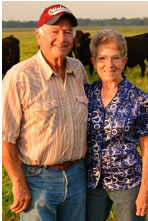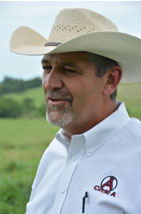Toxic fescue impacts weaning weights and pregnancy weights.
Effect of seedhead suppression on 205-day adjusted weaning weights of calves and breed back of cows.
Location | 205-day Adjusted Weaning Weight | Cow Pregnancy Rates |
| | Treated | Untreated | Difference | Treated | Untreated |
| Farm 1 | 473 pounds | 418 pounds | +55 pounds | 95 percent | 80 percent |
| Farm 2 | 483 pounds | 463 pounds | +20 pounds | 95 percent | 70 percent |
| Farm 3 | 476 pounds | 459 pounds | +17 pounds | Equal at 91 percent |
*Heavy spring grazing on treated and untreated paddocks resulted in seedhead suppression through grazing. Thus, the untreated paddock behaved similarly to the suppressed paddock. Adapted from Boyer et al., 2015.
Data was collected from three different locations owned by Whitesell Land and Cattle Co. At each location, the pastures were split into two paddocks so that half the herd would be on a paddock treated with Chaparral™ herbicide (tall fescue, seed heads suppressed), and the other half would be on a paddock treated with GrazonNext® HL herbicide (nonsuppressed seed heads).




